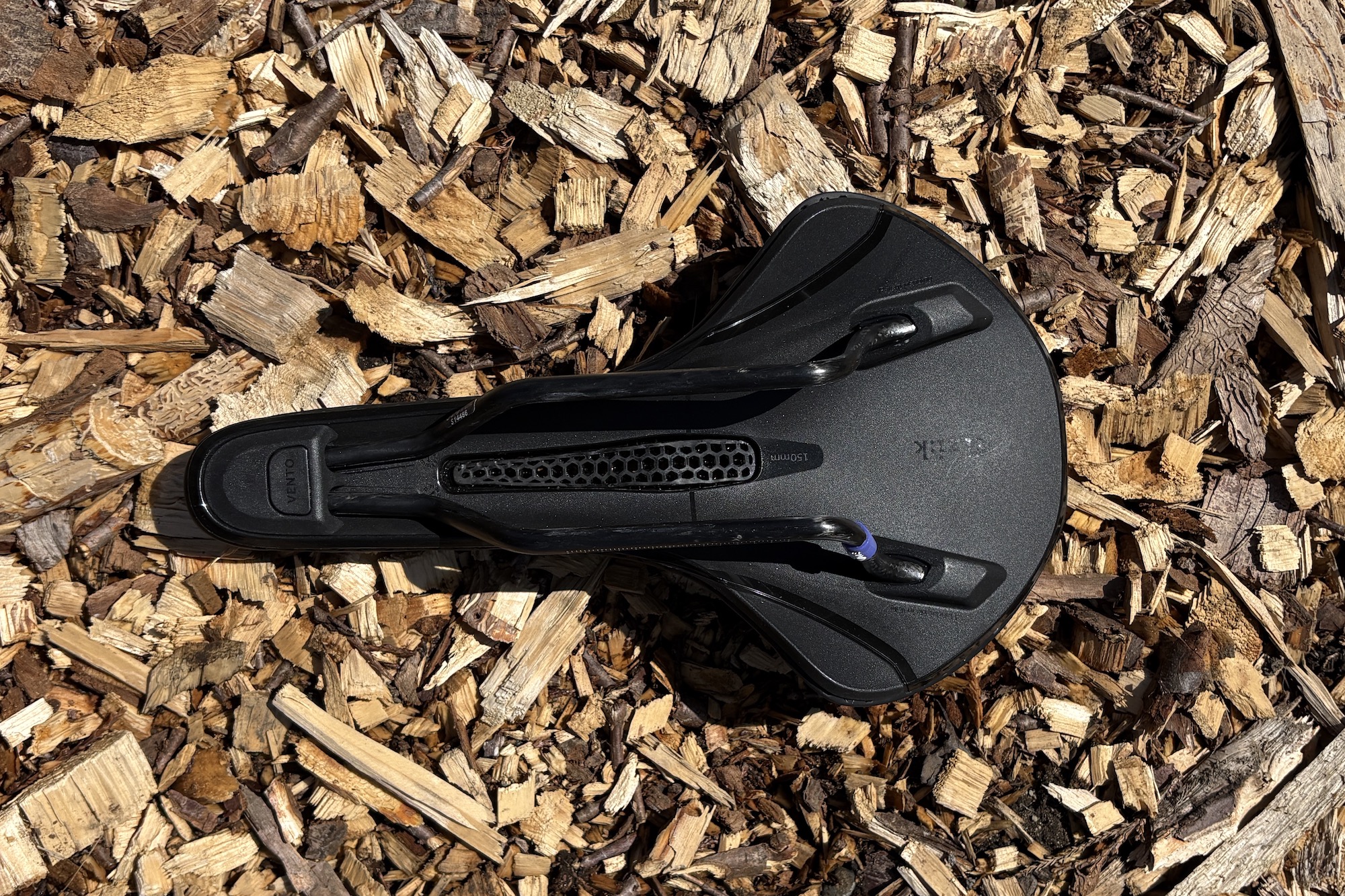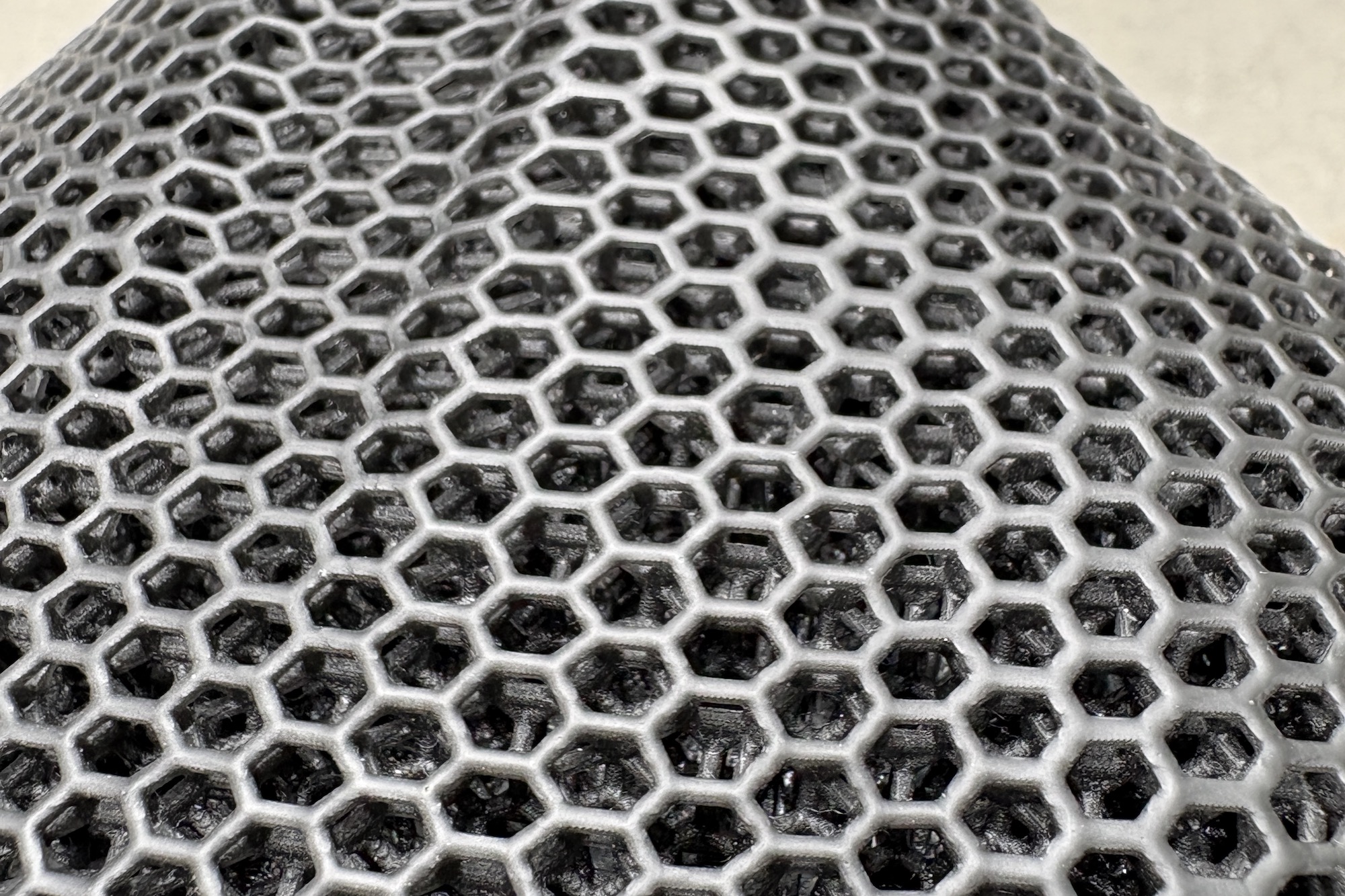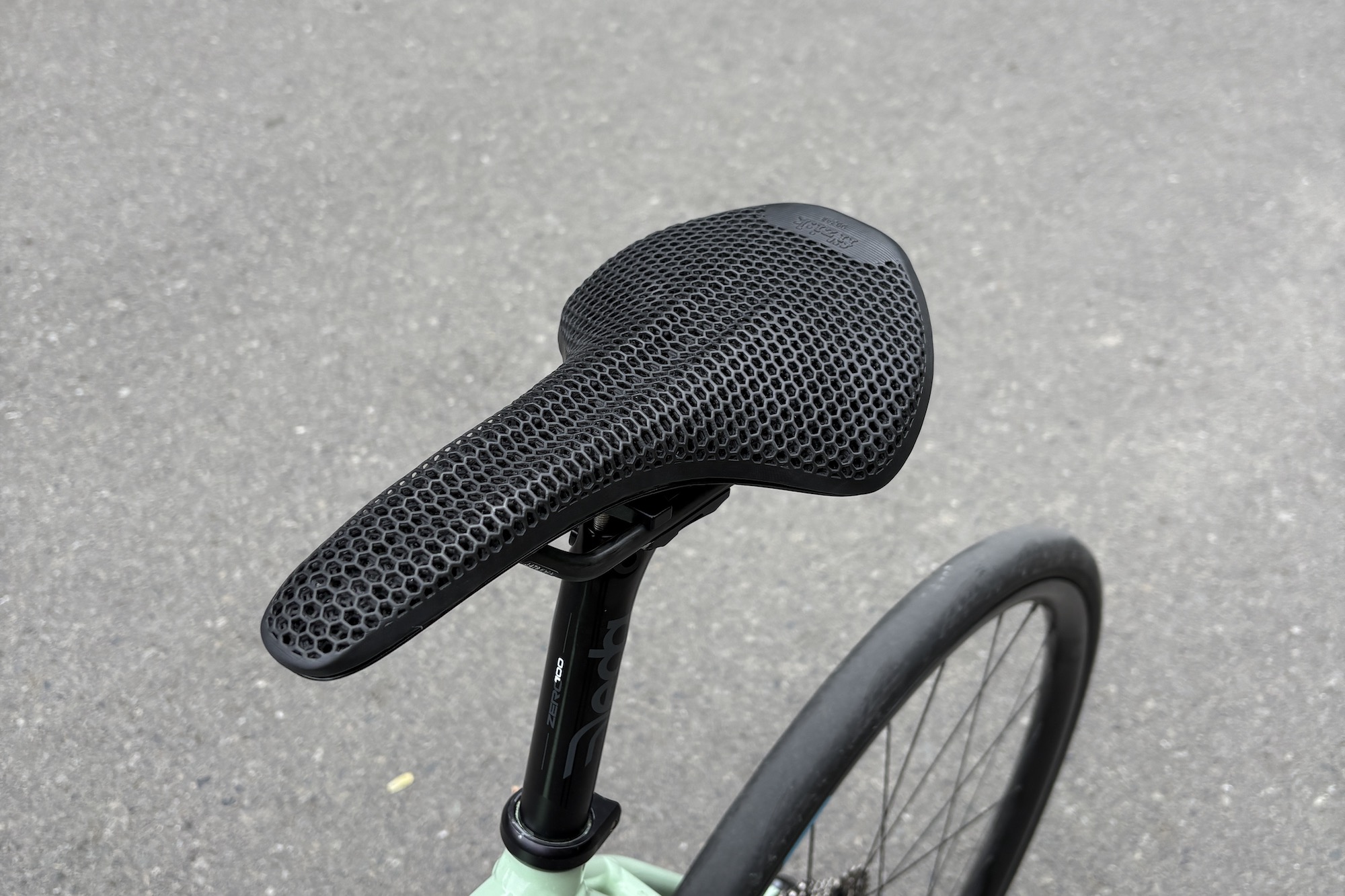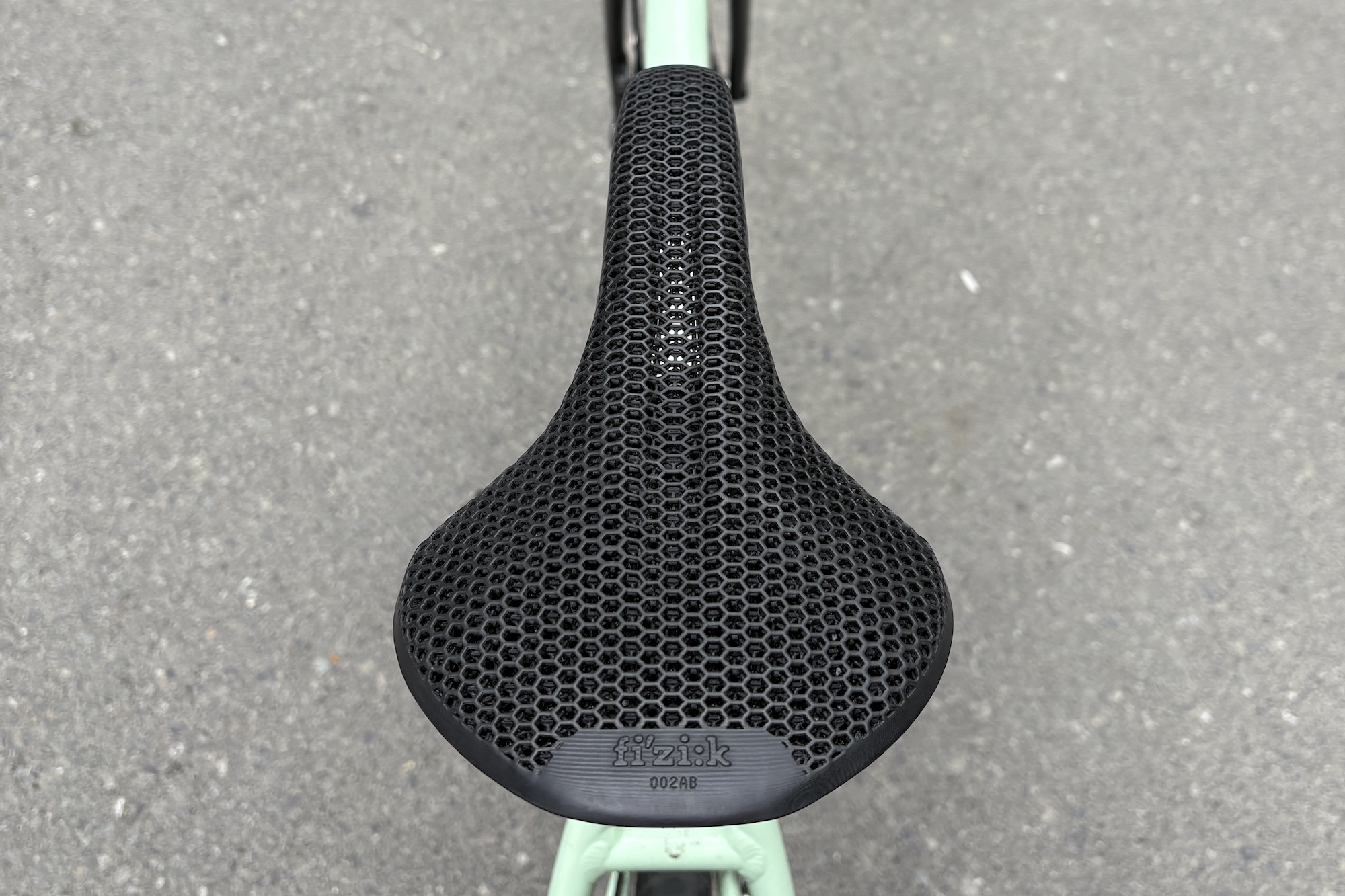Can the right saddle win you the Tour de France?
No, it cannot. But the wrong saddle could cause you to lose it. Laurent Fignon was reportedly suffering from a saddle sore in the waning stages of the 1989 Tour de France, which he ultimately lost to Greg LeMond by a margin of 8 seconds. If Fignon hadn’t had that saddle sore, might the outcome have been different? We’ll never know.
Fignon is hardly the only rider to have a major race affected by a saddle sore. Since professional riders are on their bikes for 4-6 hours a day, one small irritation can cause significant concerns. Having a saddle that works with you, as well as the right bike fit, is absolutely critical to avoid discomfort. For regular riders, saddle sores are typically less consequential, however they’re still best avoided, and a saddle that fits your anatomy correctly is a critical part of doing so.
Design and construction
(Image credit: Tyler Boucher)
Fizik launched its first 3D-printed saddle model in 2019. The company now offers several different options using this technology, and in 2024, it announced a new, 3D-printed saddle program that is made specifically for each rider called One-to-One.
These special saddles use the shapes of existing Fizik models, but customize the 3D-printed top to a rider based on a pressure-mapping fit session. For each One-to-One saddle, Fizik conducts an in-person fitting in which a customer brings their complete bicycle (and current saddle) for a consultation. The cost of this session is included in the price of the saddle. This experience is only available at a limited number of Fizik dealers (10 in North America; two in the UK, with more spread out over the rest of the world). The fit session lasts roughly 45 minutes and entails multiple periods of carefully conducted testing interspersed with standing around while the fitter fiddles with things.

(Image credit: Tyler Boucher)
After the first round of pressure-mapping, Fizik’s fitting algorithm spit out a recommended saddle shape and size for me. As I learned, there is some wiggle room here: I was given the option to choose which saddle width I preferred based on the recommendations provided. Following this decision, I then climbed back on the bike for a second round of pressure mapping with the saddle in question, in this case the Vento Antares. The finished product, with a saddle upper manufactured for me, arrived at my doorstep about two weeks later, directly from Italy.
The shape and appearance are more or less indistinguishable from Fizik’s off the rack Adaptive saddles, though the top has fewer seams and there is a small purple tag located on the back of the carbon rails.
Like most other 3D-printed saddles, the surface pattern of the Antares is a textured hexagonal grid. By adjusting the amount of material underneath, the design can change to be softer and firmer in different areas. Based on the pressure-mapping session I attended, this saddle should provide the optimal amount of support for the way I sit on a bicycle.
Specifications

(Image credit: Tyler Boucher)
The ride

(Image credit: Tyler Boucher)
During my first ride on the Adaptive saddle, it was hard to notice much else besides the texture of the saddle. This “grippy” feeling is a hallmark of 3D-printed saddles and it takes some getting used to, even if you’ve experienced it before. The upside is that you stay very “locked in” without any unwanted sliding about. The downside is wear-and-tear to bib shorts, which, again is common with 3D-printed designs.
Finding the sweet spot, that place where everything falls into harmony, with relaxed shoulders and back and perfectly smooth pedaling, took some time. I was able to locate the setback quite easily, but struggled to find the right saddle angle that worked for me. Instead of a level front half with an upwardly curving tail as found on my go-to saddle, the Antares shape has some undulation in the middle, which made it tricky to find exactly the right way to adjust it. When I did find it, after several stop and start rides making subtle adjustments, everything clicked.
I still found the grippiness somewhat distracting, but when I was locked in my pedal stroke felt exceptionally fluid and the slightly sprung saddle provided a very comfortable place to sit. I’m chalking the adjustment difficulties up to the specificity of the printed top. It’s made for how I sit on the bike, not made to work for everyone. If, for example, your bike fit isn’t quite right, then the saddle won’t do its job as well as it should. Or, if you happen to have alignment issues, a One-to-One saddle could either solve this, or simply reinforce the discrepancies or imbalances already present. Further, there’s no way to know this unless you make a purchase and undergo the entire fitting process. Basically, the output is only as good as the input.
Fizik cautions against using the same One-to-One saddle across different bikes, unless they have the same exact contact points. It may work, but it may not.
All this to say, my experience was quite positive, but there are a lot of what-ifs about this program. I went into the fit session with a bike fit I was very comfortable with and no saddle issues. The saddle I received works very well for me, but not everyone will necessarily have the same end result.
Value and conclusion

(Image credit: Tyler Boucher)
The Vento Antares Adaptive saddle I tested is derived from the original Antares shape Fizik introduced decades ago, and it’s nice to see how the company has improved its offerings over time. Finish quality is very good, and for those having trouble finding a saddle that agrees with them, the One-to-One program is worth a try.
But the fact of the matter is that, $600 is a lot of money for a saddle. It’s right there with the most expensive options on the market, and for a lot of riders, this will rule it out completely as an option for them.
With that said, saddles are one of the most fraught components of a bike, yet also one of the most critical for a rider’s comfort and, in turn, happiness. In my experience, the way most riders go about choosing a saddle is via trial and error. This is a time consuming, and often painful way to try to learn what works for you. Having the opportunity to test multiple saddle shapes, with a fitter on hand and real-time feedback via a visible pressure map is a really valuable thing that I think would benefit a lot of riders. Doing so could avoid the difficulty of testing ill-fitting saddles one at a time, suffering all the while. It would be fantastic if this service could be less expensive, and available more widely. Hopefully this will be the case in the future—comfort shouldn’t be exclusively available to the most well-heeled.
